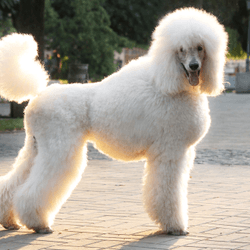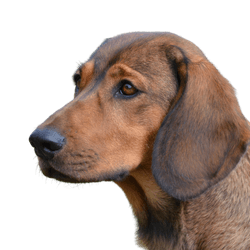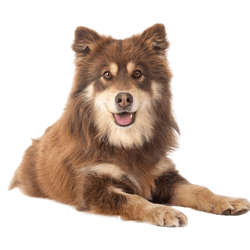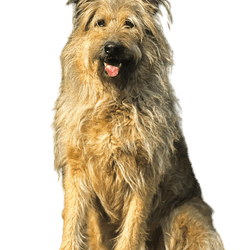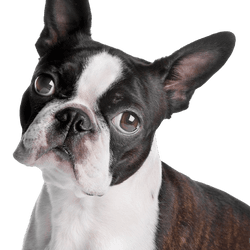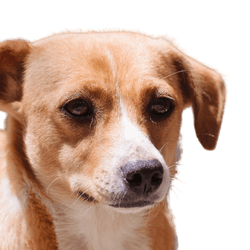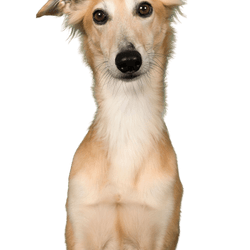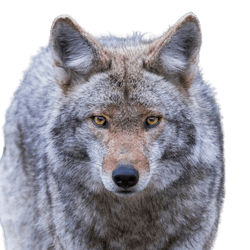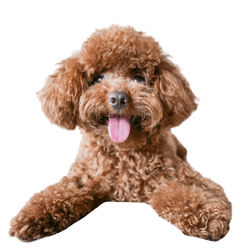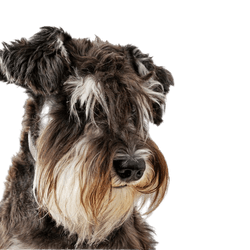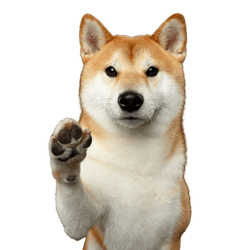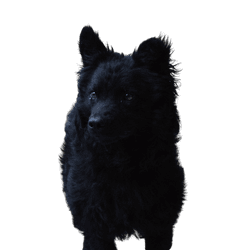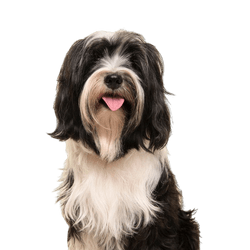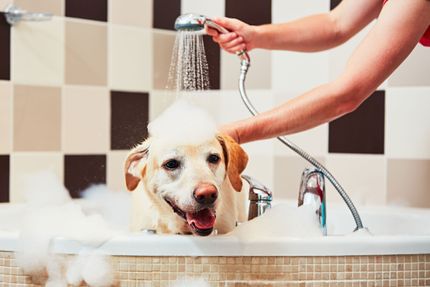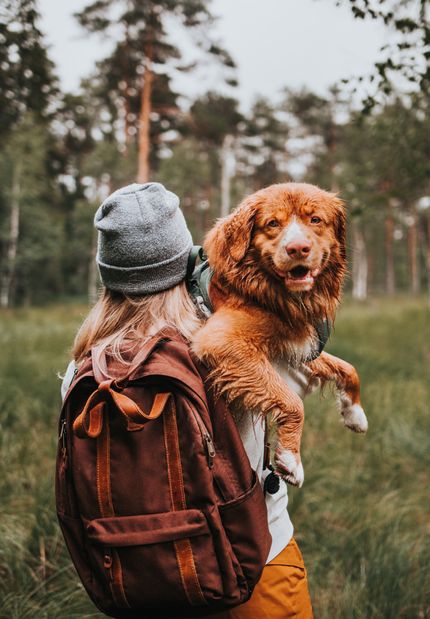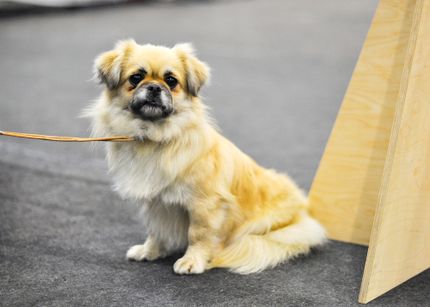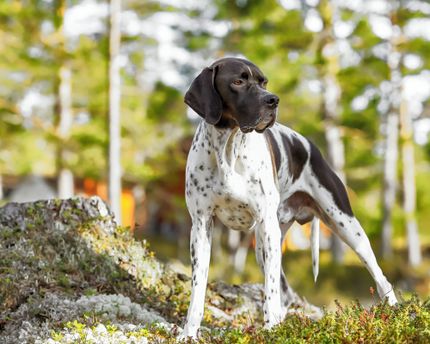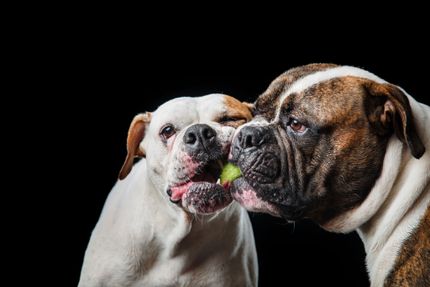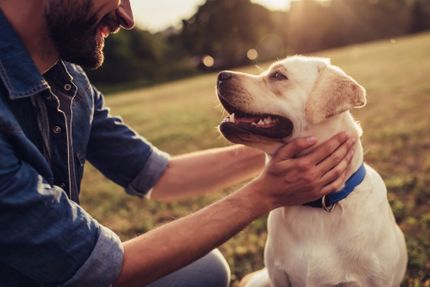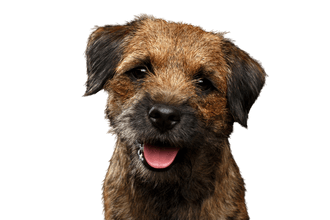
Border Terrier Breed description: Character & Co
Border Terrier
Facts & Origin
Border Terrier Breed
You can tell by the name alone that the Border Terrier comes from a border region. At first, its home was mainly the sparsely populated region between England and Scotland. This area - also called Border Country - is characterised by wide moor regions and ferns. It was the Border Terrier's task to follow the pack and the riders during fox hunts. Whenever a fox was hiding in its den, it was the Border Terrier's turn to work. It was a clear demand for the Border Terrier breeding that they had to reproduce animals that were willing to run and were physically fit. Terriers in general have been around since the Middle Ages. "Terrier" is derived from the Latin word Terra, which means earth. This makes it clear that these are animals are specialised for work on land. Whenever they weren't part of hunting, they kept house and yard free of rats and other rodents. There are some paintings from the 18th century that show shaggy hunting dogs. However, the breed has only existed with certainty since the beginning of the 20th century. Targeted breeding began in the 1920s and it was quickly recognised by the British Kennel Club. However, it took until 1987 before the breed was registered with the International Kennel Club FCI and became widely known in Germany when the then Chancellor brought the Border Terrier bitch Holly into his family in 2005.
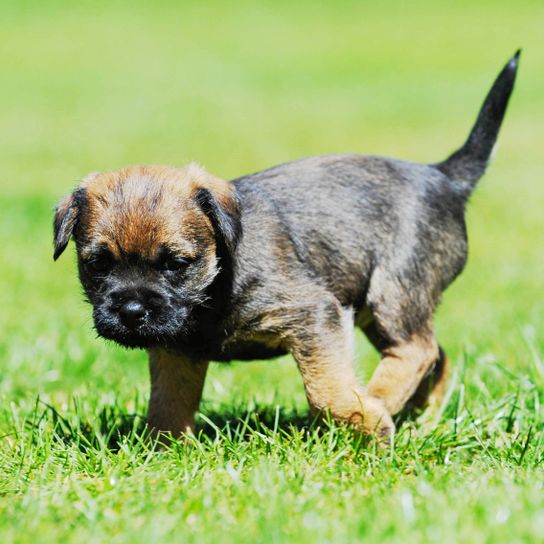
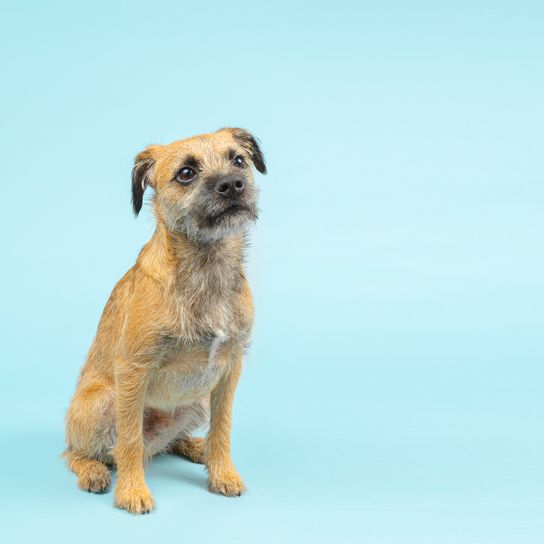
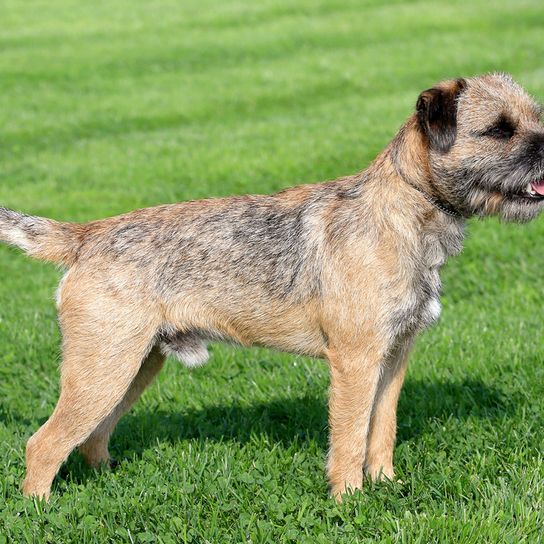
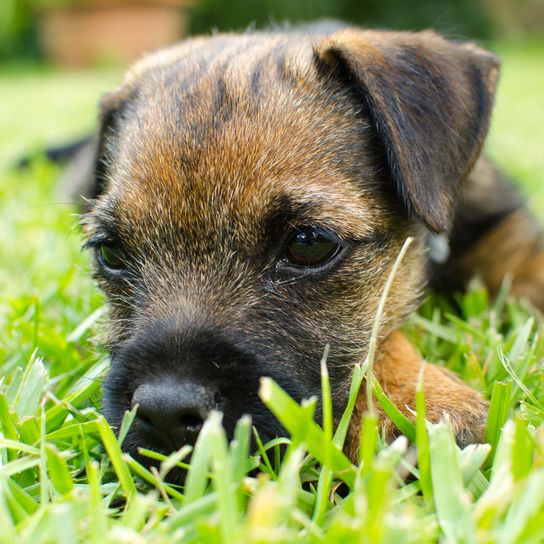
| Alternate Name | - |
| Origin | UK |
| Life expectancy | 12 - 15 years |
| Care requirements | low-maintenance |
| Activity level | average |
| FCI group | Large and medium sized Terriers |
| AKC group | Terrier Group |
| KC group | Terrier Group |
Attitude, character and temperament of the breed
What are the breed characteristics of the Border Terrier?
With its flat skull, the Border Terrier almost looks like a small otter. The blunt and short muzzle is also characteristic for them. Their typical rough-haired coat makes them look cheeky and cute. Although it is a small breed, the animal is extremely physically fit. Already the breed standard states that they should be persevering enough to accompany a horse. The Border Terrier moves gracefully and swiftly.
The Border Terrier, which used to work within a pack, has kept its friendly character until today. Your darling gets along well with other dogs. The breed makes few demands on the conditions under which it is kept, but all the more so on their leisure program. Your roommate proves to be a real bundle of energy. They need a lot of mental and physical activity. Just like their ancestors in Scotland and England, they prefer to be outdoors and take every opportunity to browse the undergrowth. As a former companion of mounted huntsmen they are perfectly suited for horse riders. They are not shy around the big animals. They also enjoy accompaning you for runs or when you go cycling. Thanks to their cleverness they quickly learn new tricks and are also eager to participate in agility or dog dancing. As the Border Terrier is a temperamental breed by nature, it is better to plan out breaks for them from the beginning. Otherwise it can happen that your darling constantly demands to be kept busy and might become hyperactive. As the Border Terrier was used to making his own decisions during the hunt, it might also question when you give them rules. Consistent treatment pays off if you want to let your four-legged friend off the leash. After all, you must never forget that they are passionate hunters. Especially when you rescue a Border Terrier in need, usually little is known about their background. However, after letting them get to know you slowly, the poor animals prove to be eternally grateful.
Character
Usage
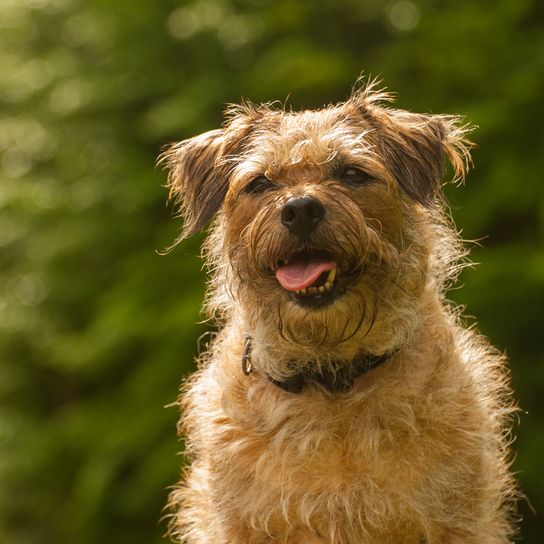

Health and breeding information
What are typical diseases of Border Terriers?
Since the Border Terrier was never a fashion dog, it has been spared from overbreeding. Nevertheless, some diseases occur more frequently:
- Canine epileptoid cramping syndrome (CECS): increased number of seizures that first appear between 2 and 5 years of age
- Hip joint dysplasure
- Progressive retina atrophy: An eye disease that leads to detachment of the retina
- Heart diseases
What should be considered in regards to Border Terrier breeding?
You may have to wait some time for a Border Terrier puppy to become available since this breed is rare around here. A reputable breeder will answer all your questions willingly and will provide you with health papers of the parent animals. Buying from a breeder is also worthwhile, because later on you will have a competent contact person for questions about upbringing and keeping of your Border Terrier puppy. Border Terriers in shelters are mostly older animals that are rescued from unacceptable keeping conditions. They will be especially grateful if you can give them a new home.


Appearance and coat of the Border Terrier?
Those who do not know any better often confuse the Border Terrier with mixed breeds. The reason for this is their shaggy coat, which protects the little animal from harsh weather conditions. On top of their soft undercoat they have a typically rough-structured coat. Border Terrier breeding deals with red or wheat coloured animals. Also grizzle with tan or blue with tan are allowed. According to the breed standard, pure black is not permitted. The typical bristly coat once protected the four-legged friend from undergrowth during hunting and made it easier for them to work in the undergrowth. The short coat proves to be extremely easy to care for. During the year, the animal does not shed much hair, during the change of coat daily brushing is advisable.
How big does a Border Terrier get?
Border Terriers reach a height between 32 and 36 centimetres.
How much does a Border Terrier weigh?
The weight is between 5 and 7 kilograms, although bitches are slightly lighter.
What is the life expectancy of a Border Terrier?
Your four-legged friend will reach about 12 to 15 years of age.
| Fur length | short |
| Fur | rough-haired |
| Ear shape | Triangle |
| Tail | short |
| Anatomy | rugged |
| Size ♀ | 28 - 36 cm |
| Weight ♀ | 5 - 6 kg |
| Size ♂ | 33 - 40 cm |
| Weight ♂ | 6 - 7 kg |
| Suitable For | Children |
Colors
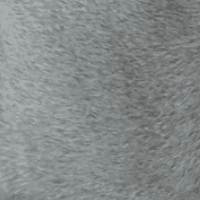
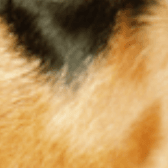
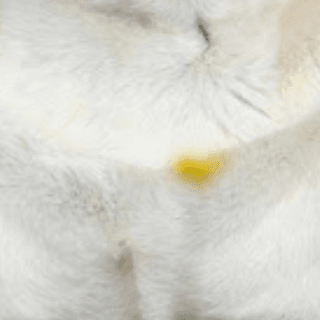

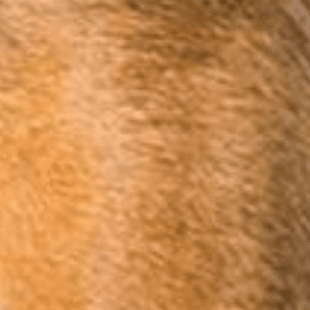
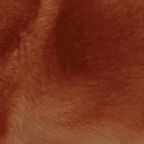



Known Diseases
Eye diseases
Often occur with allergies and intolerances.
Heart disease
Can occur frequently in dogs and can sometimes be treated with medication.
FAQ
-
A Border Terrier costs about 2000 Euro.
-
Terrier comes from the French terre and means earth. The dog was bred to look for mice and other small animals on the ground and in the earth to drive them away from the yard or ships.
Other medium dogs
Useful Articles
You can find articles that might interest you in the dogbible blog to match your favorite breed.
Visit our magazineto stay up to date on dog trends.
To find out more, view our Privacy Policy
Find here the breed that suits you and find out what character traits it has. Here you can also learn more about the origin, size and weight of your favorite breeds.
Matching your favorite breed, you'll find articles that might interest you on the dogbible dog blog.
14 foods that are toxic for dogs
Recognize abdominal pain in dogs
Dog with blue tongue: a list and why do they have blue tongues?
Relaxed walking on the leash in spite of other dogs - 3 tips for leash leadership
